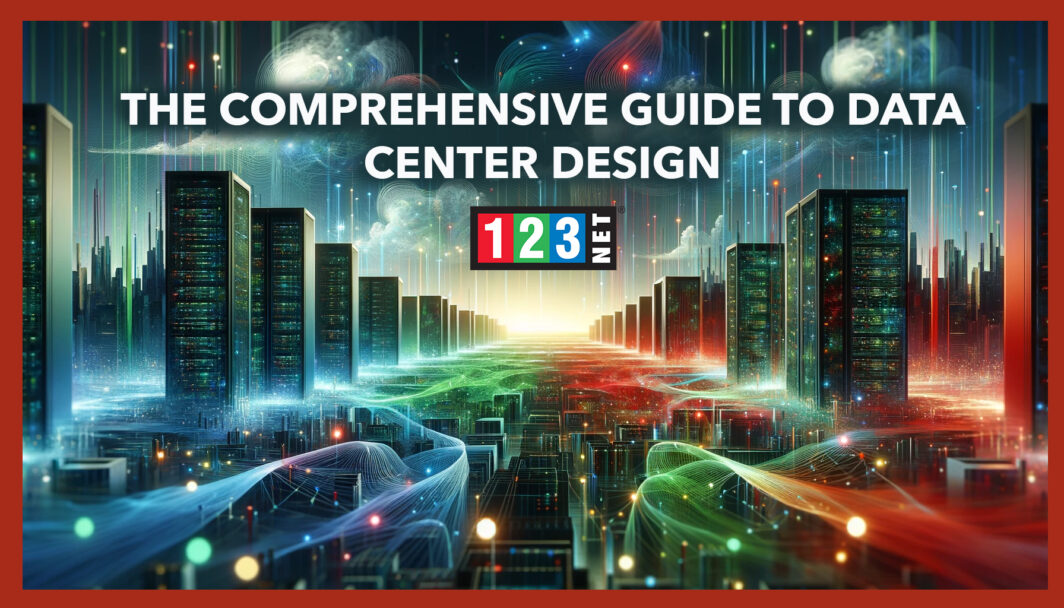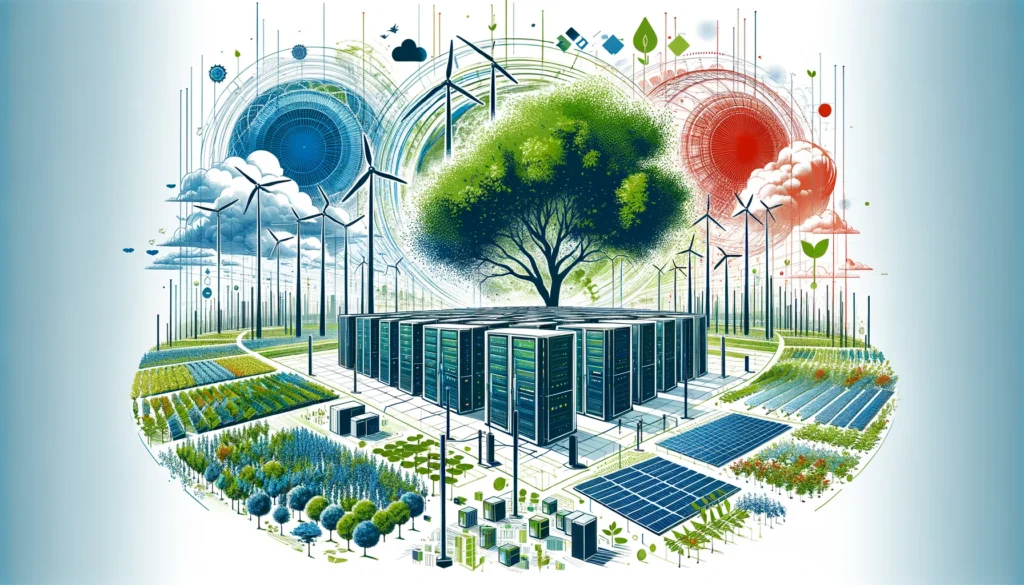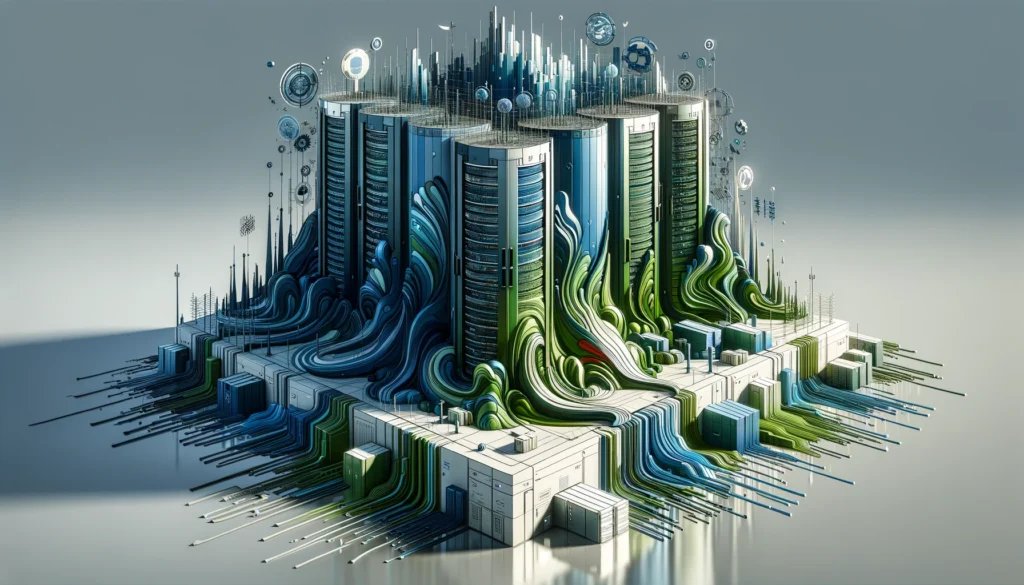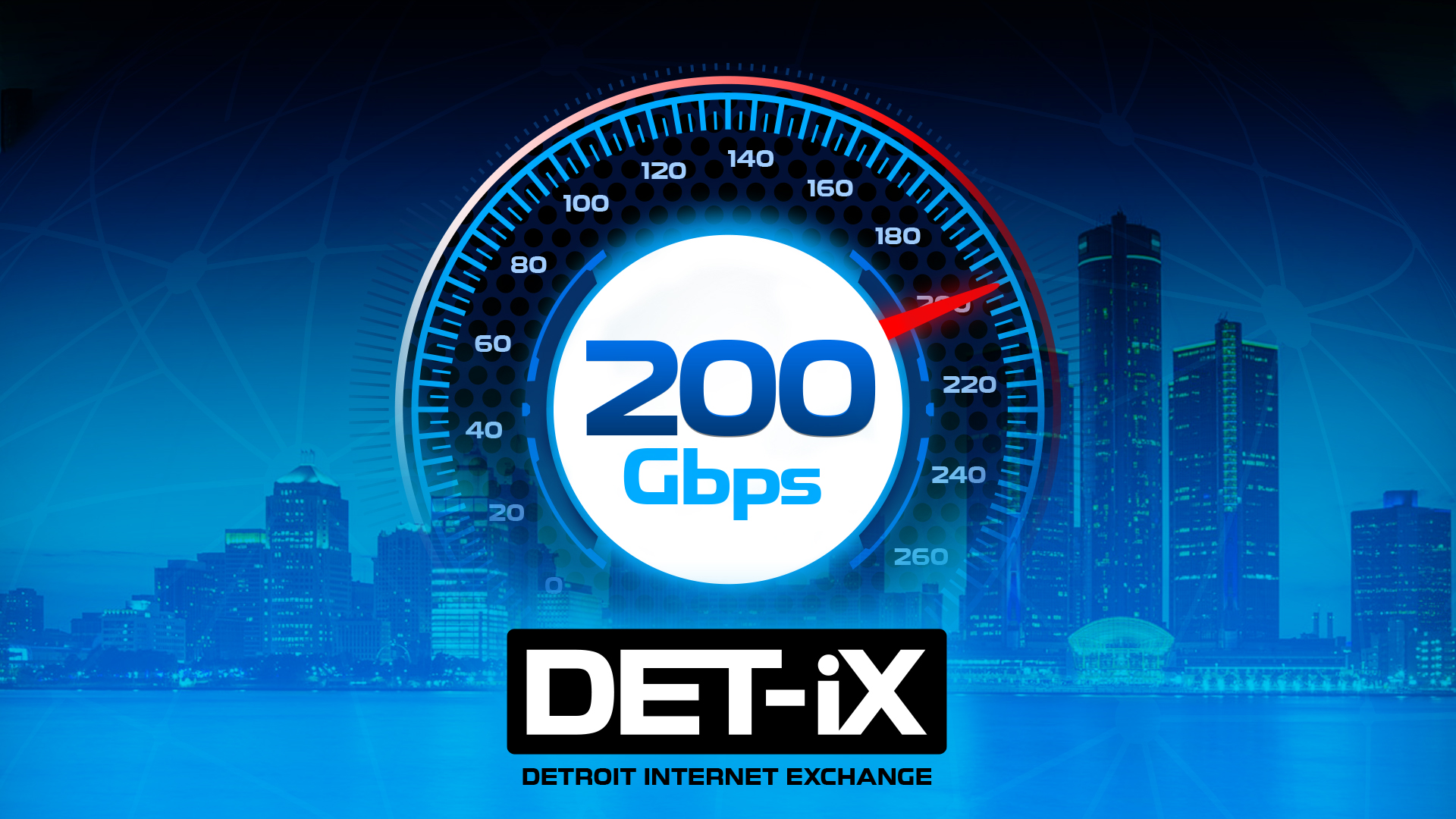
Introduction
In the digital era, the performance and dependability of data centers stand as critical pillars for enterprises. These modern technological nexuses serve as the core infrastructure of the internet, engaging in the storage. As well as computation, and dissemination of immense data volumes at every moment. With the rapid advancement of technology, the methodology behind data center design is also undergoing a significant transformation. This evolution embraces cutting-edge solutions aimed at catering to the escalating requirements for swiftness, security, and eco-friendliness. Our comprehensive guide ventures into the fundamental aspects of data center design. Shedding light on pivotal considerations, avant-garde technologies, and industry best practices. These insights are meticulously curated to enhance the operational performance and efficiency of data centers. This is ensuring they meet contemporary needs effectively.
Understanding Data Center Design
A data center embodies a sophisticated facility designated for accommodating computer systems alongside ancillary components, including telecommunications and storage systems. It’s fortified with redundant power supplies, robust data communication connections, advanced environmental controls. Like air conditioning and fire suppression systems, and an array of security measures. The quintessential aim of a data center lies in its ability to guarantee the unbroken availability of IT operations and hardware in a manner that is both secure and efficient.
The infrastructure of a data center is pivotal, covering both tangible and intangible assets. That bolster the storage, computation, and dissemination of data. This infrastructure spans hardware, software, networking resources, and the suite of services necessary for the sustenance, activity, and governance of a corporate IT environment. A meticulously architected infrastructure is paramount, as it underpins the efficient, secure, and scalable execution of applications. Thereby meeting the current needs while accommodating future growth and technological advancements.
Moreover, in the rapidly evolving digital landscape, data centers have become indispensable hubs of information technology. They support a wide range of activities, from cloud computing and online services to big data analysis and beyond. As such, the strategic planning and design of data center infrastructure have taken center stage. This is emphasizing not just operational efficiency and security but also energy efficiency and environmental sustainability. By integrating state-of-the-art technologies and following best practices, data centers can achieve optimal performance. This is ensuring they remain at the forefront of supporting the digital demands of businesses and organizations worldwide.
Key Considerations in Data Center Design
Location and Site Selection
The geographical placement of a data center is pivotal, influencing not only its operational efficacy but also the overhead costs associated with its maintenance. Essential considerations such as the local climate, and the proximity to crucial network connectivity hubs play a role. A strategically chosen location can mitigate risks, reduce latency in data transmission, and optimize operational costs. This is done by leveraging local resources and infrastructure.
Scalability and Flexibility
Moreover, the architecture of data centers must prioritize scalability and adaptability, enabling them to respond to fluctuating demands with ease. This necessity has led to the adoption of modular designs that support the incremental expansion or contraction of resources. This ensuring that the infrastructure can evolve without causing major operational disruptions. Such designs allow for a seamless integration of new technologies, accommodating growth and technological advancements while maintaining uninterrupted service.
Energy Efficiency and Sustainability
In an era where environmental sustainability and energy consumption are of paramount concern, the drive towards energy-efficient data center designs has become more pronounced. Strategies include employing energy-saving equipment, tapping into renewable energy sources, and deploying innovative cooling methodologies. To significantly lower energy usage and reduce the environmental impact. These approaches not only contribute to the sustainability goals of organizations but also offer substantial cost savings over time.
Security and Compliance
Security measures and compliance with regulatory standards are indispensable aspects of modern data center operations. In the face of increasing cyber threats and stringent data protection regulations, data centers must implement robust physical security protocols, advanced cybersecurity defenses, and comprehensive compliance strategies. Adhering to international standards and regulations such as the General Data Protection Regulation (GDPR) and the Health Insurance Portability and Accountability Act (HIPAA) is crucial for safeguarding sensitive information and maintaining trust with stakeholders.
This complex interplay of factors—location, scalability, energy efficiency, and security—forms the cornerstone of contemporary data center design. It demands a holistic approach that balances operational needs with environmental stewardship and data protection priorities. As the digital landscape continues to evolve, the strategies employed in the design and management of data centers will remain crucial for enabling efficient, secure, and sustainable IT operations.

The Evolution of Data Center Design
Data center design has undergone a remarkable transformation, shifting from conventional, site-specific infrastructures to contemporary, agile frameworks. This evolution is largely driven by the proliferation of cloud computing and virtualization technologies. The revolutionizing the operational dynamics of data centers. These advancements have ushered in a new era of efficiency in resource management, significantly minimizing the need for extensive physical infrastructure and thereby reducing the spatial footprint of data centers. One of the most notable benefits of these technologies is the facilitation of scalable computing resources. This means that data centers can now dynamically adjust computing power, storage capacity, and network bandwidth to meet fluctuating demands. This helps with enhancing both operational flexibility and efficiency. Furthermore, the integration of cloud services and virtualized environments has paved the way for more cost-effective solutions. As it allows organizations to optimize their IT expenditures by paying only for the resources they consume.
Innovative Technologies Shaping Data Center Design
Server Virtualization
Server virtualization marks a significant leap in data center technology, enabling multiple virtual servers to operate on a single physical server. This breakthrough optimizes resource utilization dramatically, allowing for higher efficiency and a substantial reduction in the physical hardware required. By compartmentalizing a single physical server into several virtual ones, organizations can achieve a higher density of resource usage. This is leading to cost savings on equipment, energy, and maintenance.
Edge Computing
Parallel to server virtualization, edge computing emerges as a pivotal innovation. Especially in the era of the Internet of Things (IoT). By processing data nearer to its source rather than relying on a centralized data center, edge computing significantly cuts down latency and conserves bandwidth. This proximity to data sources boosts the performance of IoT devices and applications. Facilitating real-time analytics and decisions, thereby enhancing user experiences and operational efficiency.
Hybrid Cloud Solutions
Hybrid cloud solutions represent another cornerstone in modern data center strategies. By blending the capabilities of both private and public clouds, these solutions offer unmatched flexibility and scalability. Businesses can strategically manage their workloads and data storage. This is moving non-sensitive operations to the public cloud while keeping core data secure in the private cloud. This approach provides a scalable, efficient, and cost-effective model, catering to fluctuating demands and complex computing needs.
Artificial Intelligence and Machine Learning
Furthermore, artificial intelligence (AI) and machine learning (ML) technologies are being increasingly integrated into data center operations. AI and ML are revolutionizing the way data centers are managed. These technologies not only improve operational efficiency but also contribute to significant energy savings. This is paving the way for smarter, more sustainable data center operations. Together, server virtualization, edge computing, hybrid cloud solutions, and AI/ML technologies encapsulate the dynamic and evolving landscape of data center infrastructure. This is offering advanced solutions to meet the growing demands of the digital age.
Best Practices in Data Center Design
Effective Cooling Strategies
In the realm of data center operations, effective cooling strategies stand as a critical component for enhancing efficiency and extending the lifespan of equipment. The adoption of advanced cooling techniques, such as liquid cooling systems and hot aisle containment, marks a significant shift towards more sustainable and energy-efficient practices. Liquid cooling, by directly absorbing heat from components, can drastically lower temperatures, thereby reducing the reliance on traditional air conditioning and its associated energy costs. Hot aisle containment focuses on segregating the hot air expelled by equipment, preventing it from mixing with the cooled air, thus improving cooling efficiency and further diminishing energy consumption.
Power Distribution and Backup Solutions
Equally paramount to the continuity of data center operations is the implementation of robust power distribution and backup solutions. Redundant power systems, alongside backup generators, ensure that data centers remain operational even in the face of power outages, safeguarding against data loss and service interruptions. Efficient Power Distribution Units (PDUs) play a vital role in optimizing energy management, offering precise control over the power supply to equipment and enhancing the overall energy efficiency of the facility.
Network Architecture
The backbone of any data center’s operational integrity is its network architecture. Investing in high-speed connectivity and incorporating redundant pathways are essential strategies for maintaining high availability and optimal performance of IT services. Such a robust network infrastructure supports the seamless delivery of data and services, crucial for meeting the demands of modern digital operations.
Security Measures and Compliance Standards
Furthermore, the security of data centers and compliance with regulatory standards cannot be overstressed. Implementing stringent security measures, including multi-factor authentication, robust encryption, and conducting regular security audits, is imperative for safeguarding sensitive information against breaches. Adhering to compliance standards ensures that data centers meet legal and industry-specific requirements, reinforcing trust and reliability among stakeholders. Together, these strategic approaches to cooling, power distribution, network architecture, and security underscore the multifaceted efforts required to maintain and optimize data center operations in an increasingly digital and data-driven world.

FAQs on Data Center Design
- What is the most energy-efficient data center design? A: Energy-efficient data centers incorporate green technologies, such as renewable energy sources and innovative cooling methods, to minimize environmental impact and operational costs.
- How does virtualization affect data center design? A: Virtualization reduces the need for physical hardware, allowing for more efficient use of resources, easier scalability, and reduced energy consumption.
- What are the challenges of designing a scalable data center? A: Designing a scalable data center involves anticipating future growth, choosing modular and flexible infrastructure components, and ensuring compatibility between old and new technologies.
In conclusion, the design of data centers is a complex but critical process that requires careful consideration of various factors, including scalability, energy efficiency, and security. By leveraging innovative technologies and adhering to best practices, organizations can create efficient, reliable, and sustainable data centers that meet the demands of today’s digital world.




